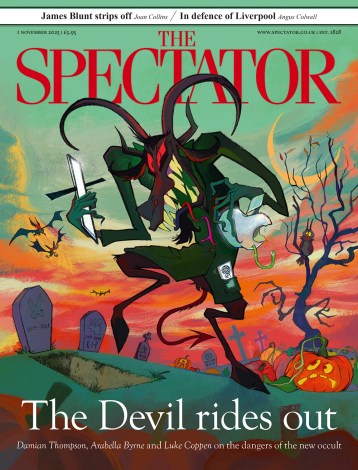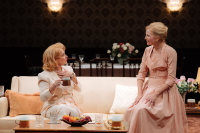The Misanthrope
Comedy
Molière is a genius but only in France. Play-goers here need some convincing that he belongs in the first rank. This new production of The Misanthrope shifts the action from 17th- century Paris to present-day London and turns the bickering upper-class lightweights into film-makers and their hangers-on. Gosh. What a breakthrough. Translator Martin Crimp has single-handedly discovered that the movie world is a sort of aristocracy. Call the Nobel committee. They need to hear about this guy. The most striking aspect of his translation is its incessant jangling lexical peculiarities. He’s decided to preserve one minor facet of Molière’s language, the rhyming couplets. Shakespeare toyed with this idiom in some of his early plays, then ditched it altogether. Noël Coward, who could turn a rhyme, restricted its use to comic ditties. Those examples should be a pretty clear No Entry sign to modern writers but Crimp has driven straight up the dead end.
His script reveals exactly why Shakespeare and Coward got it right. Whenever a clever rhyme is uttered it’s as if the author has barged on stage to take a bow. ‘The whole world’s a mess. We’ve fucked it. So let’s sit back and deconstruct it.’ That got a deserved laugh but the question is this, which character said it? Answer: it could have been any of them. This lack of particularity erodes any sense of dramatic truth. The ever-present rhymes stick like glue and give the text an inflexible tricksiness. Drama needs eloquence, not its evil twin, wordplay.
The show’s big attraction is Keira Knightley as the brattish beauty pursued by Damian Lewis’s dissenting melancholic. Fans of those pirate films will be familiar with Knightley’s array of facial expressions and she uses both of them here. Guileful indignation and puckish obduracy. She gives it everything she’s got. Ms Knightley is a gorgeous article but there isn’t an ounce of mystery about her. The full range of her attractions is visible at first glance. She’s ably supported by Tara FitzGerald who blusters and bosses marvellously as a stroppy acting coach. Their catty frolics are the play’s highlight. Damian Lewis’s disenchantment has been given sartorial expression with a set of outfits borrowed from a rock band or some tramps. Rumpled charm, reckless dishevelment, bleak chic, the fragrant vagrant. These seem to be the targets the designer is aiming for and misses, I’m afraid, by some distance. Lewis just looks a complete mess. His performance is full of effort and conviction. There are deft asides, despairing grimaces, wry grins, cocked eyebrows. Often he’s very nearly funny. This is a tough role. A scruffy sourpuss who announces early on that he hates everyone who has ever lived. Lewis’s achievement is to persuade us not to hate him back. Enjoyable if not quite memorable.
In Act II, Crimp renounces his decision to locate the play in the present day and, using the spurious pretext of a fancy-dress party, he trundles the entire cast on stage wearing full 17th-century rig. This is extraordinarily confusing. The costumes, wigs and make-up are so elaborate that it’s very hard to tell who is who. This uncertainty over costume hints at a wider anxiety. What’s this play for? Who’s it aimed at? Molière’s aristocrats were watching themselves on stage. His audience was his target. That immediacy, that equivalence, is lost in this version because very few London theatre-goers are part of the film-making élite. The show demands a huge imaginative effort from the audience, who must enter the mindset of the Hollywood groupie to make any sense of the drama. Hardly worth it. Molière’s genius remains, of course. Exactly where it remains is a matter for our impresarios. France, ideally.






Comments